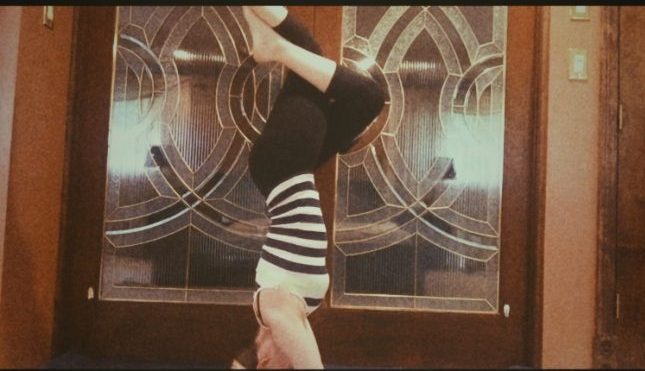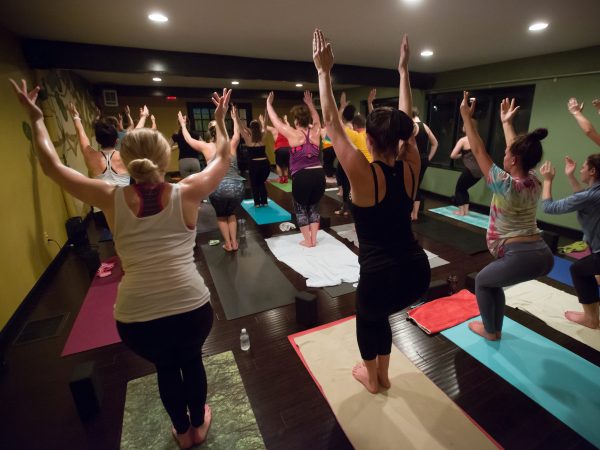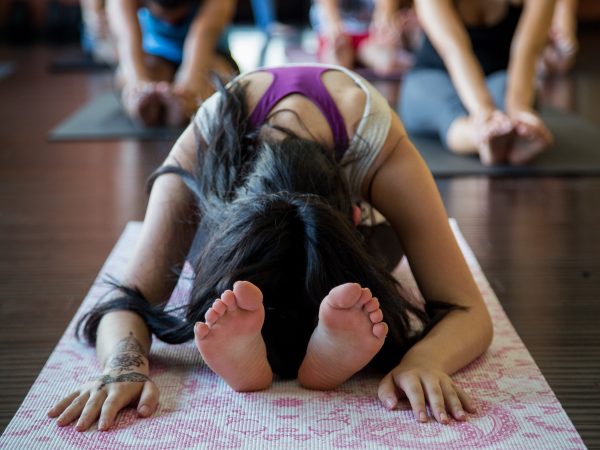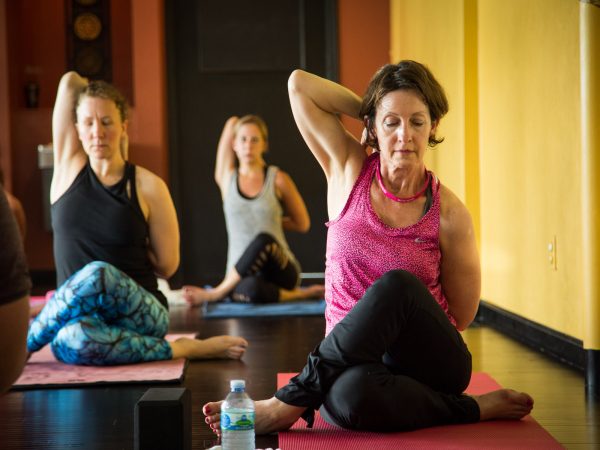The Difference between Awareness and Oblivion

A few weeks ago, I found myself teaching yoga to a child that had next to zero body awareness. While he was new to yoga and unfamiliar with the way our bodies move in poses, this was different than mere unfamiliarity. Whatever words I used, his body and mind refused to work together. In order to show him the different asanas, I physically had to move his body into them with my own hands—and even then, he had a hard time understanding what his body was doing and moved himself out of the poses I worked so hard bringing him into—all with the impression that he was still doing them.
This is not an uncommon extremity of body-awareness ignorance, and it’s something that I feel needs discussing. The mind-body connection that we teach so much in yoga is more than just beautiful words; it’s something that we as humans desperately need. When I was little, whenever I told my mom that a part of my body was hurting, the first thing she would ask me was if it was an inside hurt or an outside hurt; i.e., if the pain was inside of me or on my skin. My answer from there dictated an even more precise question; if I said inside, she asked if it was a muscle pain, a bone pain, or something else. These increasingly detailed questions eventually helped me come to an answer that she could work with. These questions also caused my brain to pinpoint the source of the pain in a way that was not only accessible but familiar; by the time I was ten, I was incredibly aware of where it was hurting and usually why it was hurting–and if I’d had the pain before, I was familiar with how to fix it.
While this way of interpreting pain in the body is not all that our mind-body connection teaches us, it was incredibly beneficial to my mother to know what exactly was wrong with me. It was also helpful to me because I was a child that worried. If I was in pain, I automatically went into that panicky “I’m dying” mode. However, with the skills my mother taught me, it slowly became easier and easier to keep myself away from that mode. Assessing my body was the first priority when I felt pain or even illness; and because of my body intelligence, I began to panic less and less and could tell the difference between pain I could ignore or get rid of easily and pain that needed to be discussed. I will be forever grateful to my mother for delving me into my mind-body connection.
Yoga teaches us this and far more. Do you remember your first major inversion? I do. The first time I ever got into Headstand, before my legs were even off the ground, my mind was flying. Merely putting my head into my hands and pushing my torso up with only the tips of my toes touching the ground was enough to make me disoriented. I lost all sense of where my body was. And then, after I’d taken a deep breath and had consciously figured out again where all my body parts were, the second I lifted my feet off the ground I lost all sense of myself again. Continuously remembering to assess where my body was within the pose was crucial to success; after a few tries, I was able to lift my legs all the way up into the air. That gloriously giddy feeling of being upside down was wonderful, but caused me to lose my mind-body connection. Only after taking deep breaths could I manage to bring my mind back.
Now, years later, practicing yoga has given me the tools to always be aware of my body. If you have been practicing yoga for a length of time, your body will become more familiar with understanding the difference in the knowledge you have of it—but only once you allow yourself to notice it. This includes knowledge of your right and left sides and the differences in your body in both places, how your body feels when it stretches versus how it feels when it strengthens, and so much more. Notice the changes in your body. Notice how aware of it you are. And notice how much better the quality of your life is when you take the time to connect to your physical self.
If you are new to yoga, it might sound daunting to understand your body, simply because there is so very much to learn. However, yoga allows you to take it one step at a time. It may seem overwhelming, especially as you practice more and more and new information is constantly thrust upon you, but when it gets to be too much, just breathe—and then you will begin to understand. Yoga will give you, slowly but surely, the tools for body awareness. And if you think you know your body now, be excited for what’s to come. Yoga expands your awareness, no matter where you are on the scale. And the more you know your body, the healthier you will be. I know that in my life this rings true. Pinpointing where my pain is within my body is just the beginning of my understanding now—yoga has transformed the way I see the world. My mind and body have taken the steps to seamless unity and even though it’s far from perfect, it’s there. And it can be for you, too.




